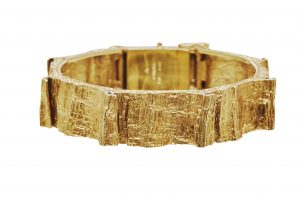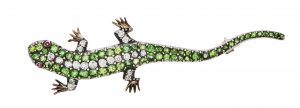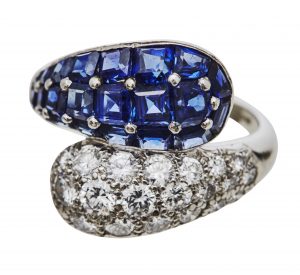Politicians who dress to rule
Tim Newark looks into the links between Savile Row and the country’s political elite
Tim Newark looks into the links between Savile Row and the country’s political elite
Tim Newark looks into the links between Savile Row and the country’s political elite
Tim Newark looks into the links between Savile Row and the country’s political elite
A successful management buyout has taken place at Savile Row tailoring house Davies & Son where, after an illustrious career and 21 years as the owner and head cutter, Alan Bennett has stepped down and the ownership of the company has passed to longstanding staff members, Graham Lawless, Patrick Murphy and Mark Broadfield.
Alan, who will continue to work alongside the rest of the team for the foreseeable future and remain as chairman, said: “I am happy to pass Davies & Son on to three members of staff who I have worked with for a long time and whose company I have enjoyed so much over the years. I am particularly proud to see Patrick’s association with the company as he began with me as an apprentice and is now part owner of the firm.”
The new owners are particularly pleased to have organised an internal buyout as, in recent years, many tailoring houses have been bought by overseas companies or external hedge funds. As sales director Graham explained: “Having worked at Davies and Son for 10 years and in bespoke tailoring for more than 30, the opportunity to own this fine historic company alongside two exceptional colleagues is a dream come true.
“Our aim is to take the company forward on a new and exciting journey while not forgetting over two centuries of tradition. I cannot thank Alan enough for putting his trust in us and to enable us to continue as an independently owned company on one of the world’s most prestigious streets. The investment was a logical step for the three of us. Our individual relationships with the company each differ, but our collective vision and passion for Davies & Son shared over many years meant that joining forces to buy the company was a logical step and a realisation of long standing ambition.”
Head cutter Patrick Murphy, who returned to Davies & Son two years ago after a long tenure at Huntsman, said: “I started my career at Davies & Son. The company has long been a standard bearer of traditional bespoke tailoring and is one of the oldest houses in the world. To be at the helm of such an eponymous business is an honour and I look forward to the challenge of taking Davies & Son onto the next level.”
Financial controller Mark Broadfield has worked for the firm for 20 years and said: “I’ve thoroughly enjoyed working here and love the whole bespoke tailoring world. Travelling in from Leigh on Sea in Essex has never been an issue for me. As Dr Johnson once said, ‘He who is tired of London is tired of life’. I think that sums up my attitude to Savile Row equally well.”
A successful management buyout has taken place
Introduction to Greyfriars
Greyfriars was one of the first vineyards in England to plant the classic Champagne grape varieties (Pinot Noir and Chardonnay) in 1989. The original planting was on a ‘hobby’ scale of one and a half acres on the south facing chalk slopes of the Hog’s Back (the North Downs) located a few miles outside Guildford in Surrey. Mike and Hilary Wagstaff, the current owners, took over Greyfriars in 2010 with the aim of expanding the vineyard to become a commercial scale producer of quality sparkling wine reflecting the unique local geology, climate and heritage of the Surrey North Downs.
Since then they have expanded the business to a total of 50 acres under vines on three sites. The 2017 harvest produced 120 tonnes of grapes and they bottled over 70,000 bottles last year. Greyfriars also now has a state of the art winery and has just completed digging a 3,500 sq. ft storage ‘cave’ in the chalk slopes of the Hog’s Back.
The company released tiny volumes of its two first ‘signature’ wines in 2013 and 2014 (Sparkling Rose Reserve and Blanc de Blancs) from the 2011 and 2012 vintages. The 2013 vintage represented the first crop from new plantings which has allowed them to expand our range of wines in 2016 as well as give sufficient volume of wine to expand distribution. The wines are now available from an ever increasing number of stockists or direct from the Greyfriars shop or online via www.greyfriarsvineyard.co.uk
What Others Have Said About Us
Oz Clarke. (Oz’s Wines for Easter 11th April 2017) “Greyfriars Blanc de Blancs, Brut, England. Greyfriars Vineyard makes several sparklers, but this fizz, in particular is a cracker. It comes from the estate’s Chardonnay grapes and is fuller, rounder and creamier and nuttier than most English fizz because they ferment and age the wine in oak barrels before giving the wine its bubbles. You still get the mouthwatering, crisp acidity of England, but it is married with a rich softness like lemon curd smeared on a warm brioche.”
Decanter Worldwide Wine Awards (July 2017) 95 Points. Gold Medal. Greyfriars Blanc de Blancs Brut, Surrey 2013. Intense note of ripe lemon, toast and yeasty notes. Fresh palate with defined flavours of lovely ripe apple fruit. Chewy texture and an excellent fruit filled length.
Julia Harding (Jancis Robinson Website June 2017) ‘The variety that stood out for me as offering real potential was Pinot Gris. The example from Greyfriars managed to achieve impressive depth of fruit and flavour even at a modest alcohol level, supported by fermentation in old oak.” 17/20 the highest rated English still wine.
Susie Barrie (Decanter Magazine August 2017) Greyfriars, Rose Reserve Brut, Surrey 2013. 94 Points. “Made from 100% Pinot Noir with a third of the blend fermented in old oak this antique gold-coloured rose is full of spiced plum fruit and creamy, roasted nut flavours. A rich-textured and toasty style that’s a great match for food.”
Tom Stevenson (World of Fine Wine Q3 2017) Greyfriars Blanc de Blancs Brut, Surrey 2013. Absolutely Gorgeous. Lovely lemony-toasty fruit aroma. Classy, long great intensity and finesse (98 points). His top rated English sparkling wine; Greyfriars, Rose Reserve Brut, Surrey 2013. Very pale peach-cum-apricot colour, hints of oak and Pinot, delicate fruit, fine mousse. Exemplary (92 points).
Introduction to Greyfriars Greyfriars was one of the
The recent rise in antique jewellery sales can be seen as a response to mass consumerism with a need for products which are individual and non-identical. Jacquie Gray, owner of jewellers, Grasilver, who specialise in Scandinavian design, states that now “women are more interested in buying good quality iconic pieces that are one-offs and not mass produced”.
Sporting antique jewellery has become more popular with women combining modern and antique pieces. Lynn Lindsay of the London-based Wimpole Antiques notes: “They are very versatile and play to the individual taste. We see clients who purchase an antique choker to wear with a modern chain or an antique ring to wear next to a modern ring with matching colours and stones.”
Anthea Gesua, founder of Anthea A G Antiques recommends going to antiques fairs, such as the upcoming Winter Art & Antiques Fair Olympia where she and over 100 of the UK’s top antiques dealers will sell their stock for six days. She says: “It’s perfect if you are looking for antique jewellery as the goods are vetted*. She cautions: “When there is no independent vetting, be aware of older reproduction jewellery. Make a beeline for those dealers who are members of trade associations LAPADA and BADA.”
Buying from a dealer who is a member of a trade association means you can trust in the quality. “Not all antique pieces are as valuable as others, so always look out for good craftsmanship,” urges Anshul Rakyan, proprietor of A Rakyan Collection Ltd. “Of course only buy if you know you will wear the piece, as this is the most important reason. If you love the piece, and the price feels right, do make the purchase. With these one-off products, once they are gone they are gone.”
Invest in one piece and make it the best you can afford. A retro gold bracelet makes a big statement and can be dressed up or down suggests Gesua who also advises looking out for jewellery from the important ‘houses’ such as Cartier, VCA, Boucheron, Bvlgari and Tiffany.
 “Bracelets are popular now especially wide cuff ones from the 1940s and 1970s” agrees Lindsay of Wimpole Antiques, a regular exhibitor at the Winter Art & Antiques Fair, who points out that Vivianna Torun Bulow-Hube original pieces are very sought after at the moment with the 50 year anniversary working with Georg Jensen.
“Bracelets are popular now especially wide cuff ones from the 1940s and 1970s” agrees Lindsay of Wimpole Antiques, a regular exhibitor at the Winter Art & Antiques Fair, who points out that Vivianna Torun Bulow-Hube original pieces are very sought after at the moment with the 50 year anniversary working with Georg Jensen.
Rakyan believes, however, that every woman should have one or more piece in their collection from the Art Nouveau and Art Deco era. He makes the point that jewels from 1900 to 1930s (sometimes also 1940s) were created at the height of jewellery-making, not only in the way that they were made, but also for their designs. “These eras of Art Nouveau and Art Deco are very special,” he says. “Generally, we like antique pieces that contain nice gemstones (be it Kashmir sapphires, Burmese rubies, old-mine emeralds, natural pearls, old-cut diamonds), because these stones are rare and the quality that you can get in older pieces is, generally speaking, not found in newer pieces. So, for us, a combination of nice gemstones combined with the intricate design and craftsmanship of the past (sometimes also by the famous makers that made these pieces) would be the best pieces to look out for.”
 Gesua has another pearl of wisdom regarding engagement rings. She advises that when buying an engagement ring always spend as much as you can as it may be the only piece of jewellery you will own for a while before homemaking, housekeeping and children take over!
Gesua has another pearl of wisdom regarding engagement rings. She advises that when buying an engagement ring always spend as much as you can as it may be the only piece of jewellery you will own for a while before homemaking, housekeeping and children take over!
But, she also praises earrings, which ‘dress the face’, as a good investment option. Wimpole Antiques has noticed trends for easy to wear pieces which can go from day to night. For example, there is a movement towards brooches recently. They are now being worn in various ways such as on the hip or on a hat or hung on a chain or choker.
As well as the fashion for brooches, Jackie Gray observes: “the trend is for vintage mid-century modern pieces where the effect is timeless and looks as modern today as it did back in the 1960s.”
She says that there is also still a tendency towards a silver or a space theme with Bjorn Weckstrom Lapponia pieces (as worn by princess Leia in the first Star Wars film) which looks set to continue and thrive, especially with the 40th anniversary coming up this year.
Rakyan agrees that for the last few years now, retro has been coming back into fashion and still is, but also says, “We can now see that the intricate work of the Victorian period is becoming popular again. While retro covers bold and chic fashion statements, Victorian and Art Deco jewels cover the intricate and fine workmanship.” Gesua adds that Early Georgian jewellery is still charming and very collectible too.
 Ultimately, tastes differ and it’s very much about personal preference and individual style which is the beauty of antique jewellery. There is a wealth of pieces from different eras. So it comes down to budget and a dedication to hunting out that special piece that catches the eye.
Ultimately, tastes differ and it’s very much about personal preference and individual style which is the beauty of antique jewellery. There is a wealth of pieces from different eras. So it comes down to budget and a dedication to hunting out that special piece that catches the eye.
Anthea A G Antiques, A Rakyan Collection Ltd, Grasilver and Wimpole Antiques are all exhibiting at Winter Art & Antiques Fair Olympia taking place 31 October – 5 November. Other jewellers at the fair include Horton Antiques and John Joseph.
* There is a very strict vetting process in place whereby everything is checked by independent experts to ensure that every piece for sale is genuine and correctly labelled.
The recent rise in antique jewellery sales


